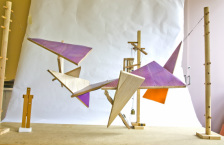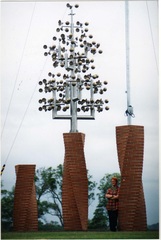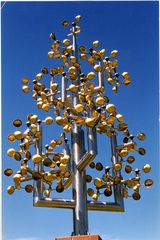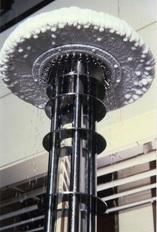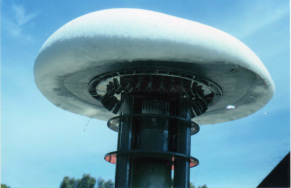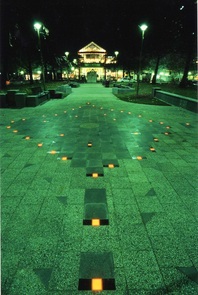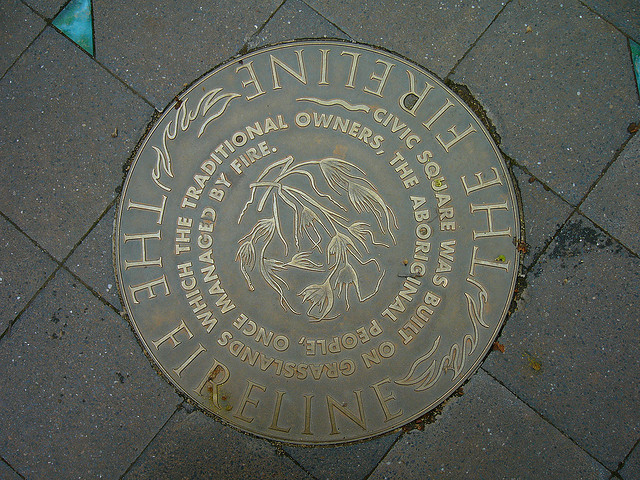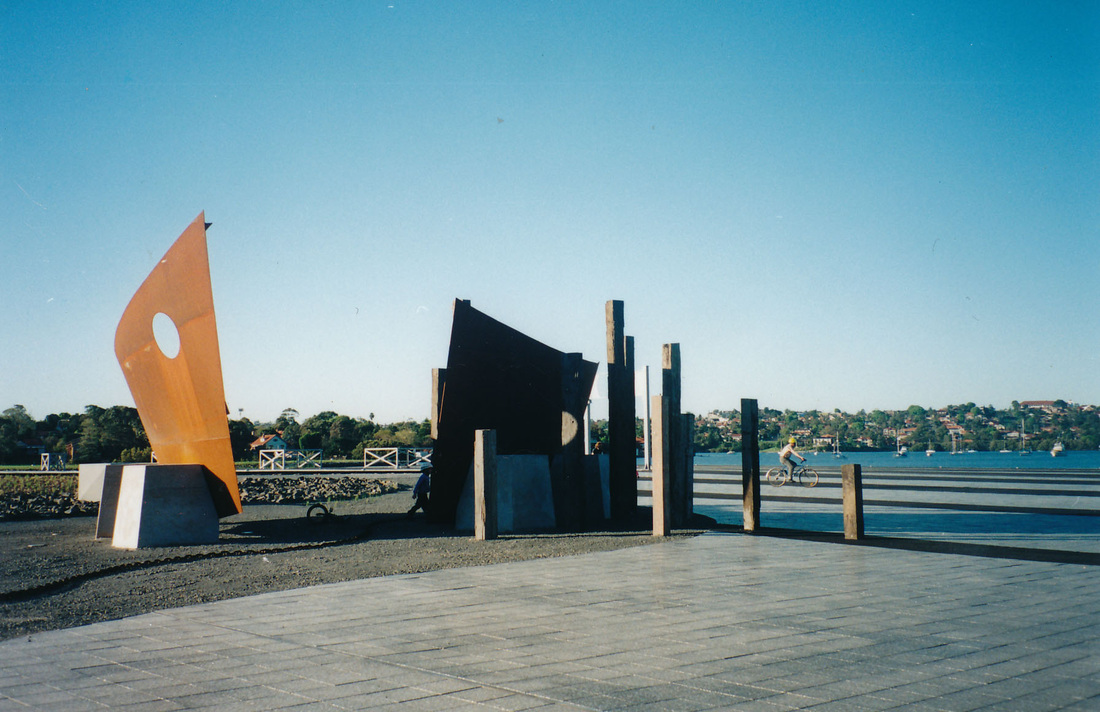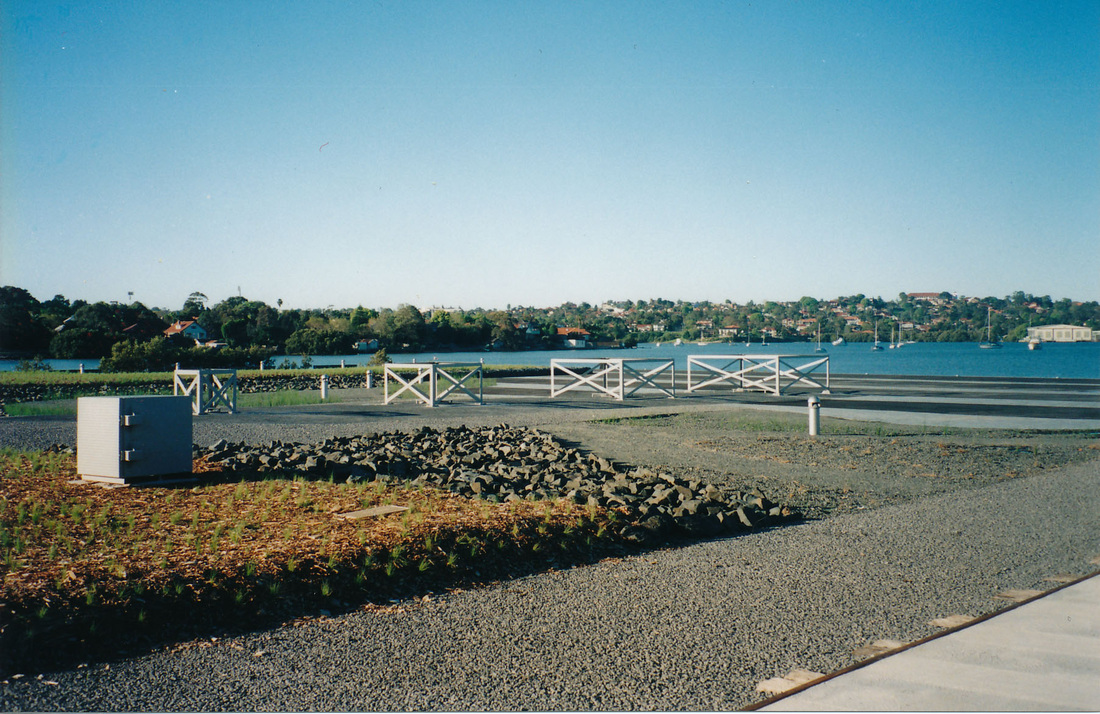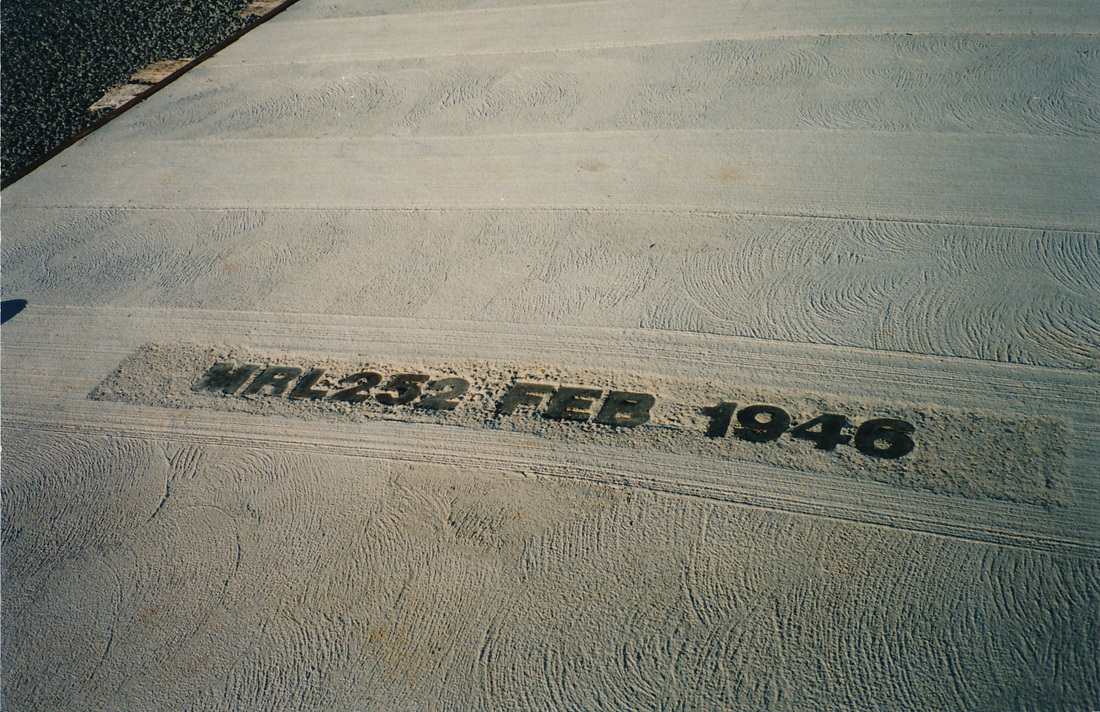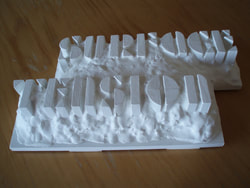
Surface Tension - this project engages with the
tension between urban development and "nature".
Very weak cement erodes in the weather, human
intervention and vegetal intrusion, to reveal a solid
core of the words "surface Tension". If the bunker
is covered in graffiti, the paint will form a skin which
would break down over time. Another sense of surface
tension - graffiti is welcome.
tension between urban development and "nature".
Very weak cement erodes in the weather, human
intervention and vegetal intrusion, to reveal a solid
core of the words "surface Tension". If the bunker
is covered in graffiti, the paint will form a skin which
would break down over time. Another sense of surface
tension - graffiti is welcome.
|
Model & Metaphor: a partially functioning prototype
for a kinetic sculpture that is moved by the heat of the sun through the use of Shape Memory Alloy, to track the position of the sun and to optimize the of its rays for the generation of solar power. In an artist-in -residency in collaboration with the Centre for Organic Solar at the University of Newcastle, New South Wales. |
|
The Wind Tree: an 8 meter tall tree made of stainless steel and bricks bears foliage made of dozens of brass anemometer cups which spin in the breeze.The twisted brick columns refer to the chimneys that drew the air upwards in an earlier era. The brick trunks also refer to the original forest cut down for pastoral development.
The tree trunks are placed on a 10 meter diameter circle of artificial grass which is continually being encroached upon by a local virulent grass - another reference to the tension between nature and urbanization. Located at the Logan Campus of Griffith University, Queensland. Project manager: Kath Kerswell of Griffith Artworks. |
|
The Ice Tower: a 3.5 meter partially functioning prototype with a glass column supported by stainless steel pipes, fills with water to levels directed by real-time data streamed from a remote tidal measurement station at a sub-Antarctic island. A pressure sensor controls the water level in the glass column, which overflows at Spring Tides. By means of a refrigerator, an ice cap is produced in reference to the sub-Antarctic site. The ice changes shape depending on the weather conditions including wind, sun direction and air humidity.
Collaborator: Dr John Bye (Oceanographer). Sponsors: Australian Network for Art & Technology, The Visual Arts & Crafts Board of the Australia Council & Flinders University. |
|
The Fireline: glass tiles are illuminated by a flickering of fibre optic lights. Civic Square and Ainslie Place, the location of the work was once a grassland with a scattering of trees. The work takes into account the urbanization of the place and the fact that the grasslands were once managed by the aboriginal people through the practice of systematic burning to encourage new growth and to attract game. A bronze plaque acknowledges the traditional owners and features a typical grass - known as kangaroo grass.
In collaboration with Malcolm Munro, landscape architect for the Australian Capital Territory (ACT). |
|
Sound of World War 2 Shipbuilding - the site at the Brays Bay Foreshore Park (Sydney) was a shipbuilding yard in the 1940s, The working sounds have been reproduced and played into an acoustic space made from old blue prints of a typical ship's hull. A series of launching cradles surround resonating pits in which sounds a ship launch can be heard. Site signage is based on the early activities and names of ships built there.
Collaborators: Pittendrigh, Shinkfield & Bruce Landscape architects. Sound engineer: Shane Fahey of Megaphon Acoustic Design. |
